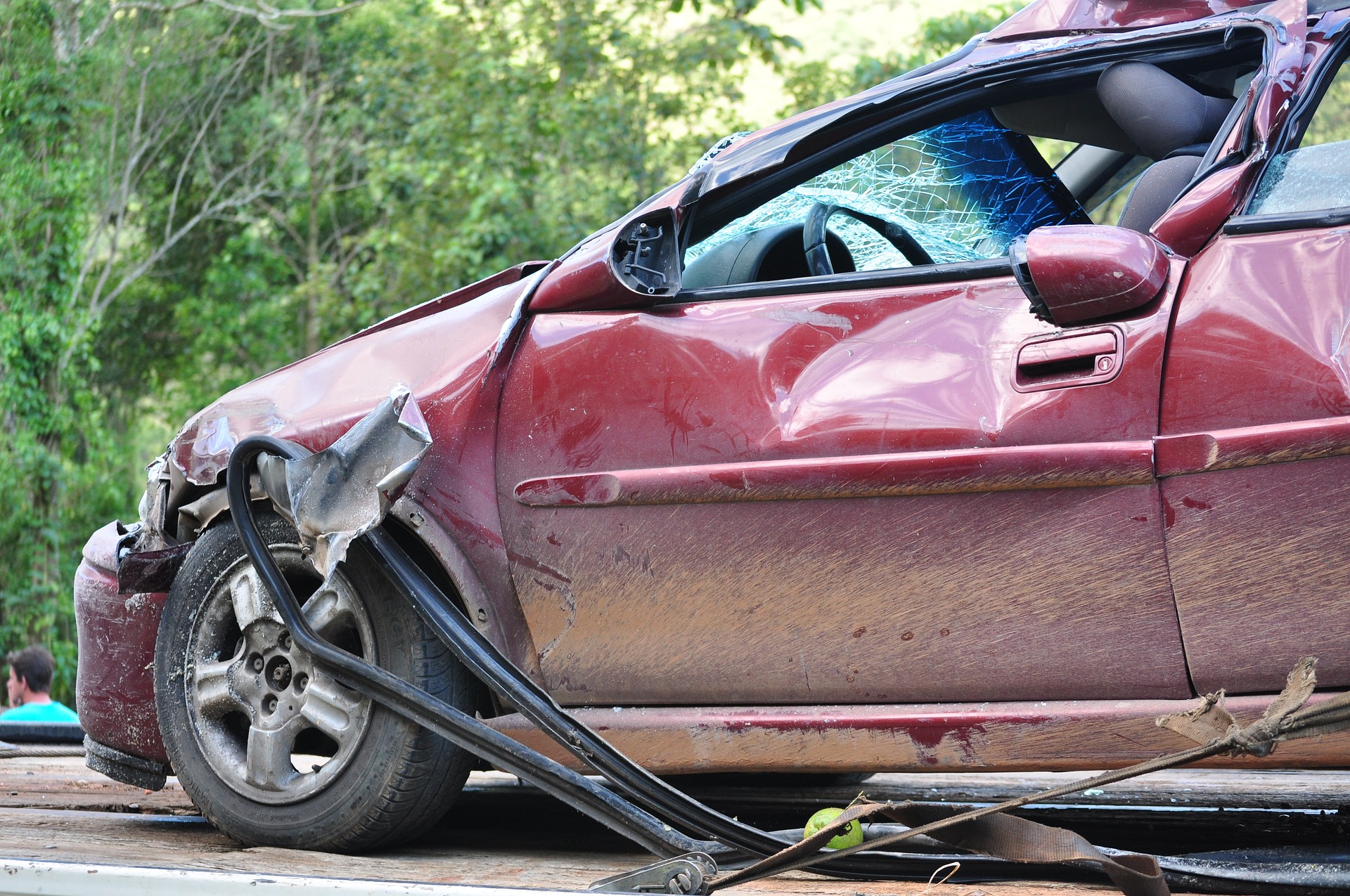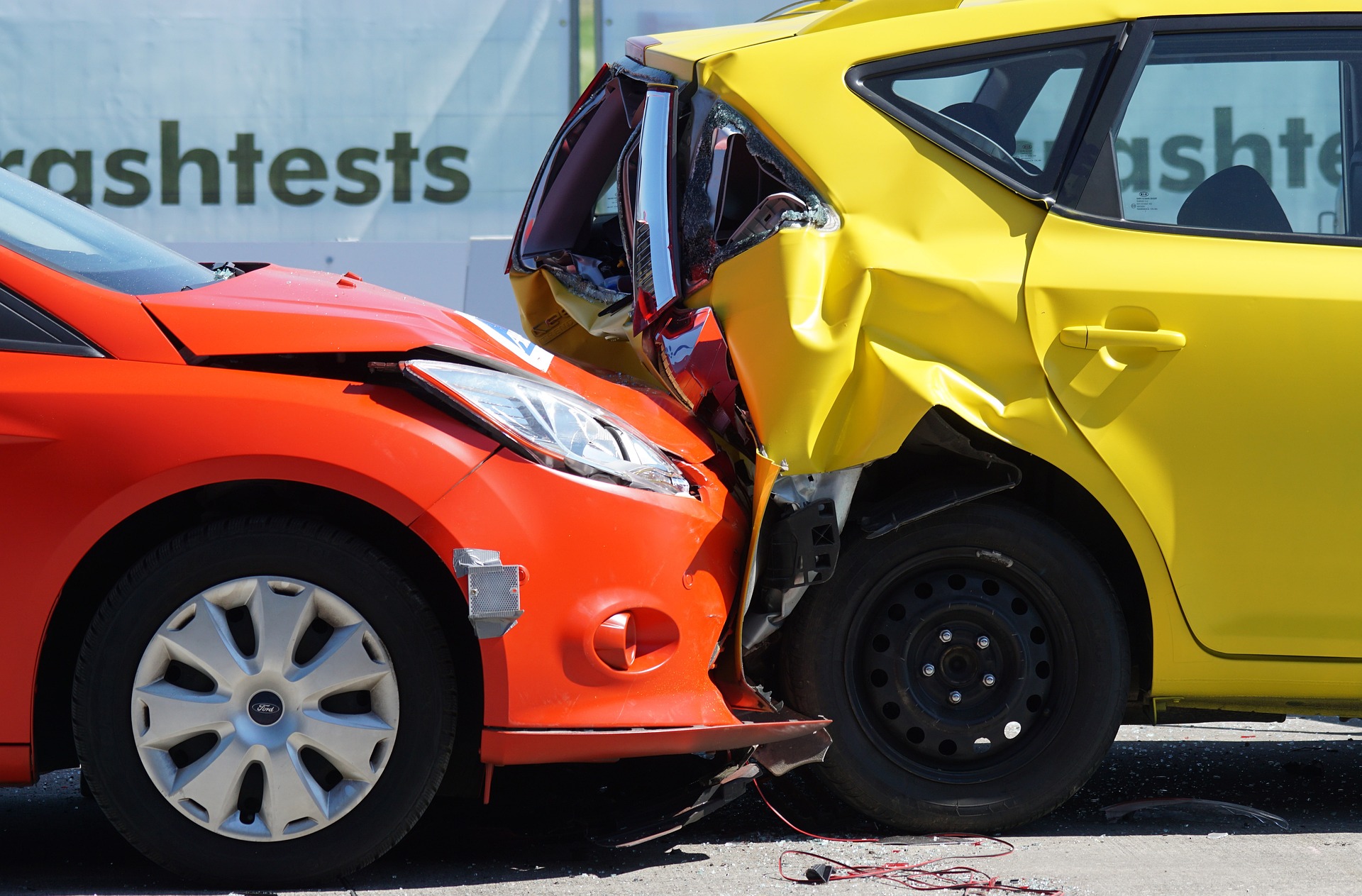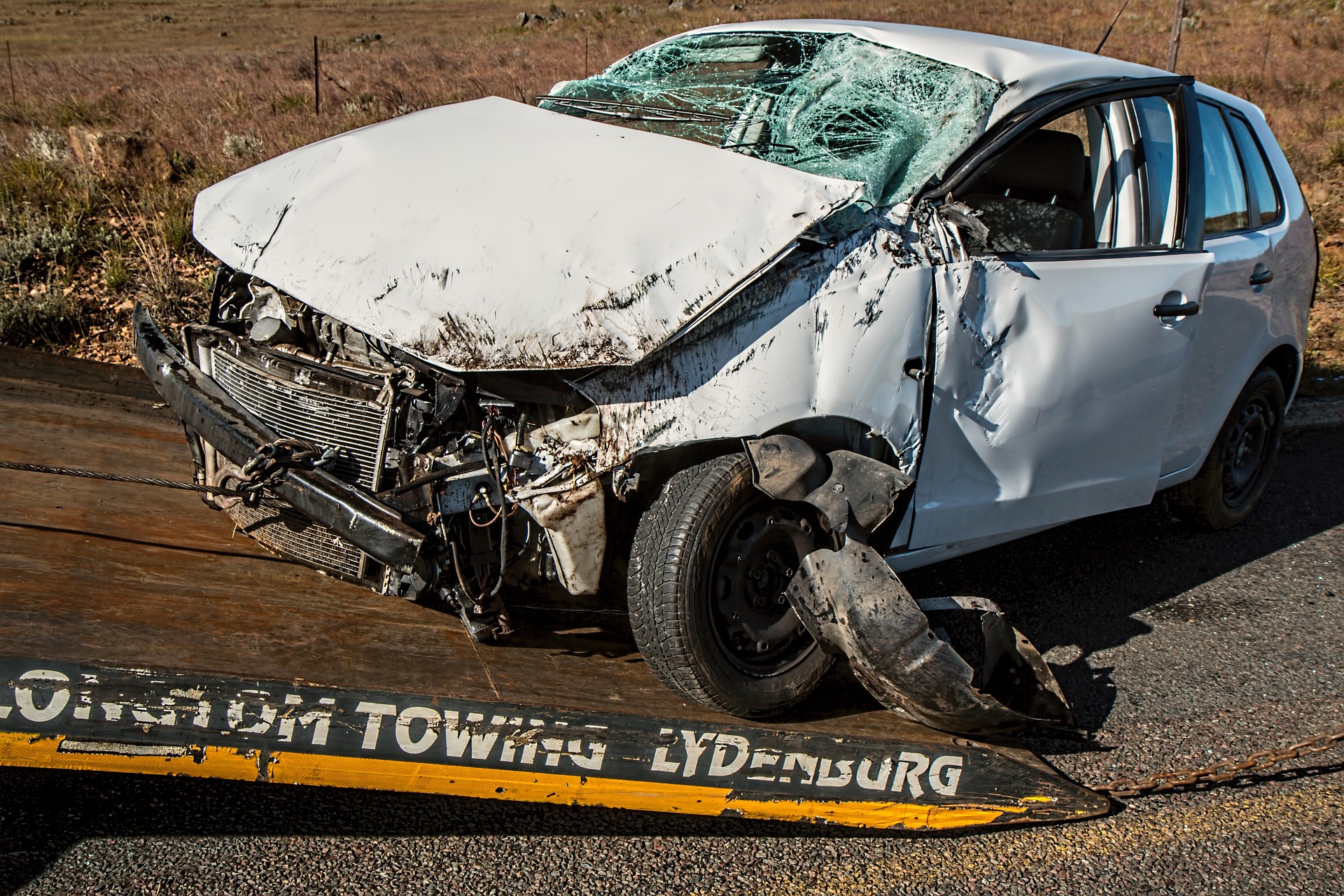If you have been involved in a car accident, you may have suffered a spinal fracture. A spinal fracture is a break or crack in one or more of the bones (vertebrae) that make up your spine. Depending on the location and severity of the fracture, you may experience pain, numbness, weakness, or paralysis in some parts of your body. You may also have difficulty breathing, moving, or controlling your bladder or bowel functions.
Spinal fractures can have serious and long-term consequences for your health and quality of life. That’s why it’s important to seek medical attention as soon as possible after a car accident and to consult with a personal injury lawyer who can help you get the compensation you deserve for your injuries.
In this article, we will explain the different types of spinal fractures, their causes, symptoms, diagnosis, treatment, and prevention. We will also share some tips on how to cope with the physical and emotional challenges of living with a spinal fracture and how to find the best legal representation for your case.
What are the types of spinal fractures?
Spinal fractures are classified according to the segment of the spine where they occur and the pattern of the bone breakage. The spine is divided into three main sections: cervical (neck), thoracic (upper back), and lumbar (lower back). Each section has a different number of vertebrae and a different degree of mobility and stability.
The most common types of spinal fractures are:
- Compression fractures: These are small cracks or breaks in the vertebrae that are caused by excessive pressure on the spine. They are more common in people with osteoporosis, a condition that weakens the bones and makes them more prone to fracture. Compression fractures can also occur due to trauma, such as a car accident or a fall. They usually affect the thoracic or lumbar spine and can cause pain, deformity, loss of height, or kyphosis (a forward curvature of the spine).
- Burst fractures: These are more severe than compression fractures and occur when the vertebrae shatter into multiple pieces due to a sudden and strong force on the spine. They can affect any segment of the spine but are more common in the thoracic or lumbar regions. They can cause severe pain, spinal instability, nerve damage, or spinal cord injury.
- Chance (flexion/distraction) fractures: These are rare but serious fractures that occur when the vertebrae are pulled apart by a force that bends the spine forward. They can affect any segment of the spine but are more common in the thoracic region. They can cause severe pain, spinal instability, nerve damage, or spinal cord injury.
What causes spinal fractures?
The most common cause of spinal fractures is trauma, such as a car accident, a fall from a height, a sports injury, or a violent act. These events can apply a large amount of force on the spine and cause it to break or crack.
Another common cause of spinal fractures is osteoporosis, a condition that weakens the bones and makes them more susceptible to fracture. Osteoporosis can develop due to aging, hormonal changes, lack of calcium or vitamin D, smoking, alcohol abuse, or certain medications. People with osteoporosis may suffer from compression fractures even from minor activities such as coughing, sneezing, or lifting something heavy.
Other less common causes of spinal fractures include tumors, infections, or congenital defects that affect the structure or strength of the bones.
What are the symptoms of spinal fractures?
The symptoms of spinal fractures depend on the location and severity of the fracture and whether it affects the spinal cord or nerves. Some common symptoms include:
- Pain in the back or neck that worsens with movement
- Numbness, tingling, or weakness in the arms or legs
- Difficulty breathing, coughing, or clearing secretions from the lungs
- Loss of bladder or bowel control
- Changes in sexual function or fertility
- Spasms or exaggerated reflexes
- Deformity or curvature of the spine
- Loss of height
Some people may not experience any symptoms at all if they have a minor compression fracture that does not affect the nerves or spinal cord. However, even if you do not have any symptoms, you should still seek medical attention if you suspect you have suffered a spinal fracture after a car accident.
How are spinal fractures diagnosed?
Spinal fractures are diagnosed by a combination of physical examination and imaging tests. According to Stanford Health Care, some of the imaging tests that can help confirm a diagnosis of a spinal fracture are:
- X-ray: This can show the shape and alignment of the vertebrae and whether any bone fragments are pressing on the spinal cord or nerves.
- Computed tomography (CT) scan: This can provide more detailed images of the bones and soft tissues around the spine.
- Magnetic resonance imaging (MRI): This can show the extent of damage to the spinal cord, nerves, ligaments, and discs.
- Bone scan: This can help detect any abnormal activity in bones, including fractures. It can also tell whether your body is working to heal the break.
- Bone density screening: This can help assess the strength and quality of your bones and whether you have osteoporosis, a condition that makes your bones more prone to fractures.
Depending on the type and location of the spinal fracture, your doctor may also classify it as stable or unstable, flexion or extension, or compression or burst. These classifications can help determine the best treatment option for your condition.
How are spinal fractures treated?
The treatment for a spinal fracture depends on several factors, such as the type, location, and severity of the fracture, whether it affects the spinal cord or nerves, and whether there are other injuries or medical conditions involved. The main goals of treatment are to relieve pain, stabilize the spine, prevent further damage, and restore function.
The treatment options for spinal fractures include:
- Non-surgical treatment: Most spinal fractures do not require surgery and can be treated with conservative methods such as bracing, pain medication, physical therapy, and rest. Bracing involves wearing a special device that supports the spine and limits its movement while it heals. Pain medication can help reduce inflammation and discomfort. Physical therapy can help improve strength, flexibility, and mobility. Rest can help the bones heal faster and prevent further injury.
- Surgical treatment: Some spinal fractures are too severe or unstable to be treated with non-surgical methods and require surgery to repair the broken bones and restore the alignment of the spine. Surgery may also be needed if there is nerve or spinal cord compression that causes neurological symptoms such as numbness, weakness, or paralysis. The type of surgery depends on the specific fracture pattern and may involve inserting screws, rods, plates, cages, or bone grafts to hold the vertebrae together and promote healing.
- Vertebroplasty: This is a minimally invasive procedure that involves injecting a special cement into the cracked or broken vertebrae to fill the gaps and strengthen the bone. It is usually done under local anesthesia and guided by X-ray imaging. It can provide immediate pain relief and improve mobility for people with compression fractures caused by osteoporosis or tumors.
How can spinal fractures be prevented?
The best way to prevent spinal fractures is to avoid trauma to the spine by following safety measures such as wearing a seat belt, using protective gear when playing sports, avoiding falls, and driving carefully. You can also reduce your risk of osteoporosis-related fractures by taking steps to improve your bone health such as:
- Eating a balanced diet rich in calcium and vitamin D
- Getting regular weight-bearing exercise
- Quitting smoking and limiting alcohol intake
- Taking medications as prescribed by your doctor to prevent or treat osteoporosis
How to cope with a spinal fracture?
A spinal fracture can be a life-changing event that affects your physical, mental, and emotional well-being. You may experience pain, disability, depression, anxiety, anger, or fear as a result of your injury. However, you can cope with these challenges by:
- Seeking professional help from your doctor, therapist, counselor, or support group
- Following your treatment plan and attending your follow-up appointments
- Taking your pain medication as prescribed and using other methods such as ice, heat, massage, or acupuncture to relieve discomfort
- Participating in physical therapy and rehabilitation programs to improve your function and independence
- Staying active and engaged in activities that you enjoy and that give you a sense of purpose
- Seeking social support from your family, friends, peers, or community organizations
- Educating yourself about your condition and learning how to manage it effectively
- Focusing on your strengths and abilities rather than your limitations
- Setting realistic goals and celebrating your achievements

How to find the best legal representation for your case?
If you have suffered a spinal fracture due to someone else’s negligence or wrongdoing, you may be entitled to compensation for your medical expenses, lost income, pain and suffering, and other damages. However, pursuing a personal injury claim can be a complex and challenging process that requires legal expertise and experience.
That’s why you need to find the best legal representation for your case by:
- Doing your research: Look for lawyers who specialize in personal injury law or car accident lawyers and have a proven track record of success in handling cases similar to yours. You can use online directories, referrals from friends or family members, or reviews from previous clients to find potential candidates.
- Contacting several lawyers: Once you have a list of potential lawyers, contact them for a free consultation. During this meeting, you can ask them about their qualifications, experience,
- Strategy, fees, and communication: How will they handle your case, how much will they charge, how often will they update you, and how will they communicate with you?
- Track record and reputation: How many cases have they won or settled, what are their success rates, what are their reviews or testimonials, and are they members of any professional associations or organizations?
- Compatibility and rapport: How do you feel about their personality, style, attitude, and approach? Do you trust them and feel comfortable with them? Do they listen to you and understand your goals and needs?
After interviewing several lawyers, you can compare their answers and choose the one that best suits your case and your expectations. Remember that you are hiring a lawyer to work for you and represent your interests. You deserve to have the best legal representation possible.
Conclusion
Suffering a spinal fracture after a car accident can be a devastating and life-altering experience. You may face physical, emotional, and financial challenges that affect your well-being and your future. However, you are not alone in this journey. You can get help from medical professionals, therapists, support groups, family members, friends, and legal experts who can assist you in recovering from your injury and obtaining justice for your losses.
If you have been injured in a car accident due to someone else’s negligence or wrongdoing, you may be entitled to compensation for your medical expenses, lost income, pain and suffering, and other damages. To protect your rights and maximize your recovery, you need to find the best personal injury lawyer for your case. A good lawyer will have the experience, skills, resources, and reputation to handle your case effectively and efficiently. They will also have the compassion, empathy, and communication skills to understand your situation and advocate for your best interests.
To find the best personal injury lawyer for your case, you need to do some research, contact several lawyers for a free consultation, and ask them important questions about their qualifications, experience, strategy, fees, communication, track record, reputation, compatibility, and rapport. By doing this, you can compare their answers and choose the one that best suits your case and your expectations.
We hope that this article has provided you with useful information and guidance on how to cope with a spinal fracture after a car accident and how to find the best legal representation for your case. If you have any questions or comments, please feel free to contact us. We are here to help you. Thank you for reading.
Useful Resources
Here are some resources on suffering a fractured vertebrae after a car accident:
- Fractured Spine (Vertebrae): Types, Long-Term Effects & Treatment: This article from Cleveland Clinic explains the causes, symptoms, diagnosis and treatment of different types of spinal fractures, including compression fractures, burst fractures and chance fractures. It also provides information on prevention, outlook and living with a spinal fracture.
- Spinal cord injury – Symptoms and causes: This article from Mayo Clinic describes the signs and symptoms of a spinal cord injury, which can result from a spinal fracture. It also covers the factors that affect the level and completeness of paralysis, the emergency signs and symptoms, and the possible complications of a spinal cord injury.
- Suffering a Fractured Vertebrae After a Car Accident: This article from John Foy & Associates discusses how car accidents can cause fractured vertebrae and what to do if you have suffered such an injury. It also explains how to seek compensation for your medical expenses, lost wages, pain and suffering, and other damages.
I hope these resources are helpful to you. If you have any questions or need more information, please let me know.
Frequently Asked Questions
Here are some frequently asked questions and answers on suffering a fractured vertebrae after a car accident:
What are the symptoms of a fractured vertebrae?
The symptoms of a fractured vertebrae can vary depending on the location and severity of the injury. Some common symptoms include back pain, difficulty walking or standing, loss of bladder or bowel control, and muscle weakness or paralysis.
-
What is the treatment for a fractured vertebrae?
The treatment for a fractured vertebrae depends on the type and severity of the injury. Most spinal fractures won’t need surgery, but you might need to wear a brace for a few months. However, severe spinal fractures will need to be surgically repaired.
-
How long does it take to recover from a fractured vertebrae?
The recovery time for a fractured vertebrae can vary depending on the severity of the injury and the individual’s overall health. It can take several weeks to several months for a fractured vertebrae to heal.
-
Can I claim compensation for a fractured vertebrae after a car accident?
Yes, if you have suffered a fractured vertebrae as a result of a car accident that was not your fault, you may be entitled to compensation for your medical expenses, lost wages, and pain and suffering.
-
How do car accidents cause fractured vertebrae?
Car accidents can cause fractured vertebrae in multiple ways. The massive size of a car compared to a human is undeniable. The average motor vehicle weighs approximately 2,800 pounds. The human body absorbing the shock of this weight can be far too much for the body to handle.
-
What are the different types of spinal fractures?
There are several types of spinal fractures including compression fractures, burst fractures and chance fractures1.
-
What is the long-term prognosis for someone who has suffered a fractured vertebrae after a car accident?
The long-term prognosis for someone who has suffered a fractured vertebrae after a car accident depends on several factors including the severity of the injury, the individual’s overall health, and the success of their treatment.


